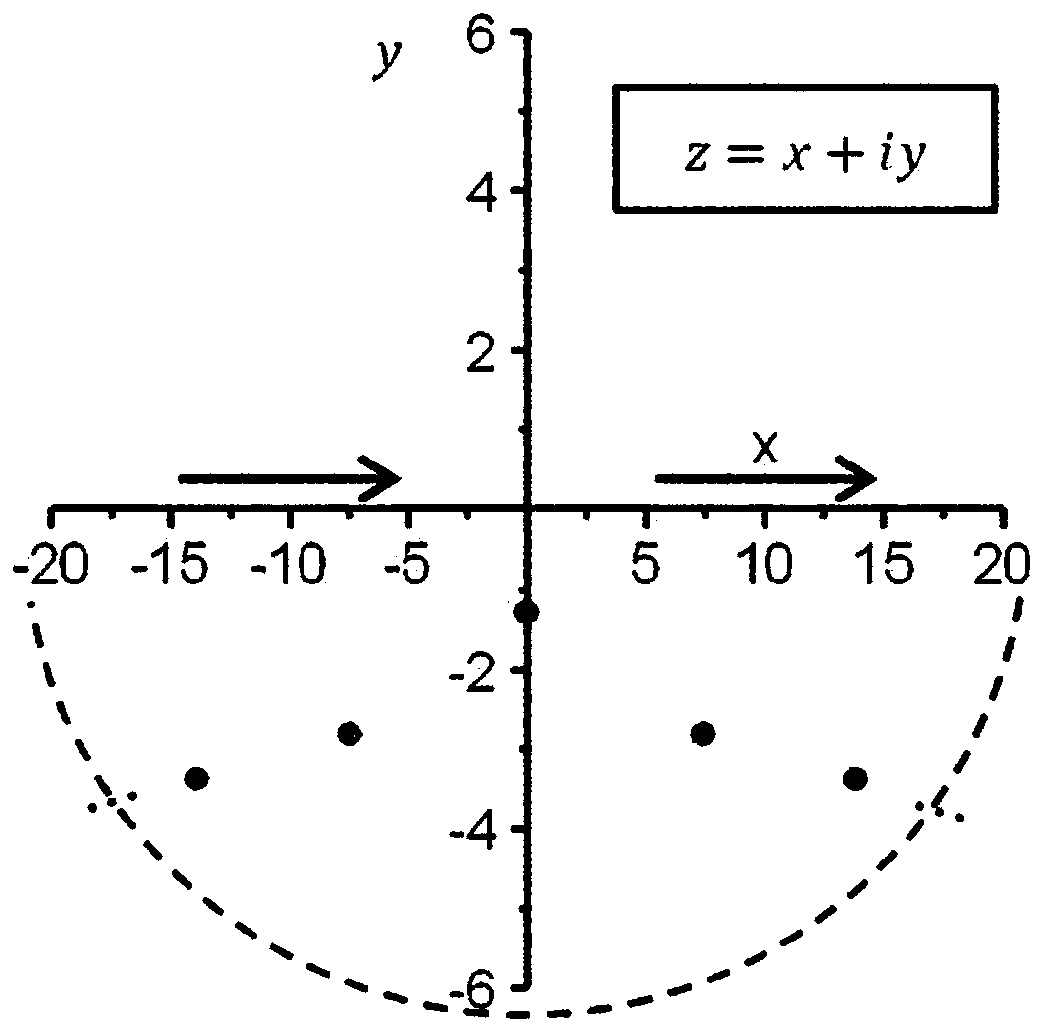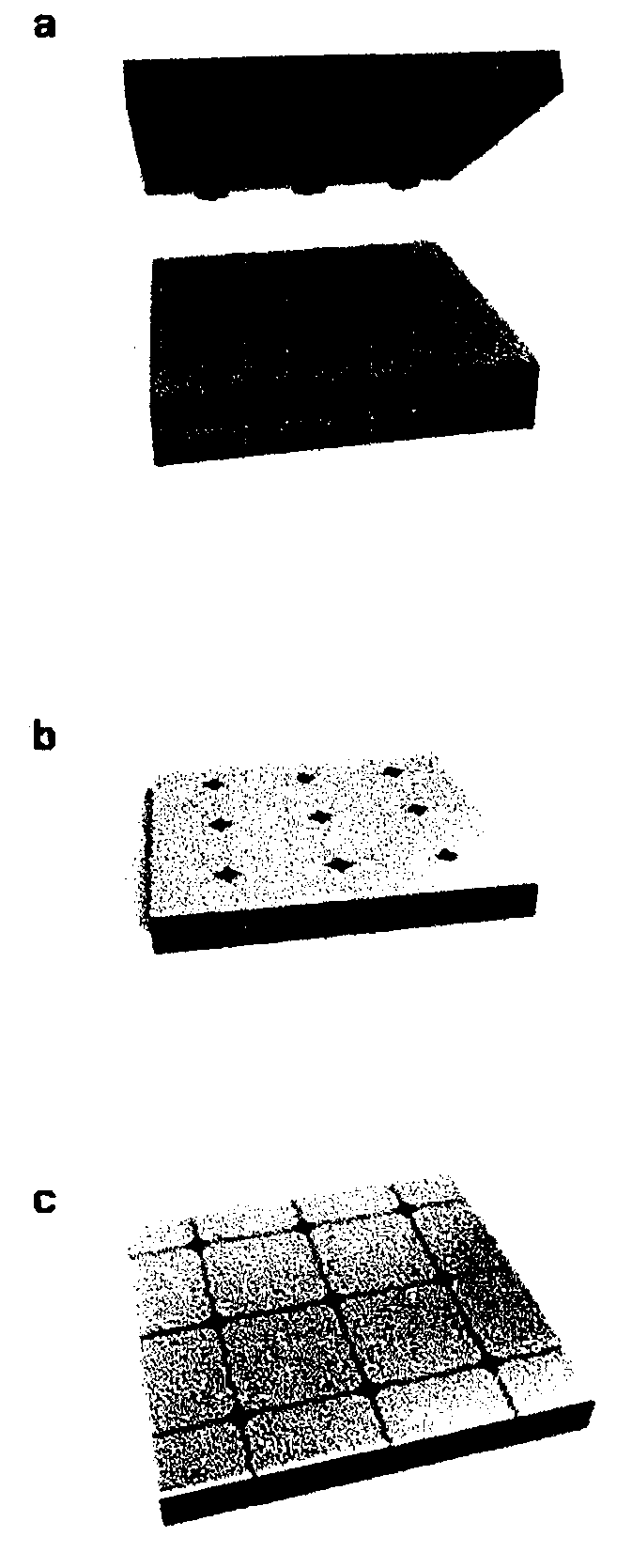High-sensitivity sensor with linear-induced cracks and manufacturing method thereof
A high-sensitivity, sensor technology, applied in the direction of sensors, instruments, force/torque/power measuring instruments, etc., to achieve high economic efficiency
- Summary
- Abstract
- Description
- Claims
- Application Information
AI Technical Summary
Problems solved by technology
Method used
Image
Examples
Embodiment 1
[0176] Fabrication of a high-sensitivity sensor based on an induction crack
[0177] like image 3 a ~ 3c shown in the manufacture of crack sensors.
[0178] Specifically, using a plasma surface treatment machine CUTE-1MPR (Femto Science Inc.), spin-coated 100 μm polydimethylsiloxane (PDMS) was treated with oxygen plasma and bonded on on the glass. After 20 μl of polyurethane acrylate (PUA) was dropped on the PDMS / glass mold, the filler-patterned silicone mold was covered and treated with 350nm UV (approximately 12mJ / cm 2 ) irradiation. Thermal evaporation was performed by a thermal evaporator (Selcos Inc.) to form a 10 nm patterned chromium layer and a sputtered 20 nm platinum layer was deposited. The PUA film deposited with the metal layer was carefully removed from the PDMA / glass mold and then stretched by 5% in the x / y direction using a custom-made stretcher. Figure 4 The crack sensor before and after stretching is shown in .
[0179] Then, a conductive polymer is ...
Embodiment 2
[0180] Manufacture of multi-pixel array sample
[0181] To demonstrate the scalability and capabilities of devices for detecting mechanical shock and pressure, such as Figure 16 As shown in b, in 6×6cm 2 A sensor network of 16 pixels (4×4 pixel array) is set on the area. Figure 16 a and Figure 16 a shows a schematic diagram of the multi-pixel system. Each pixel (1×1cm 2 Islands) consisted of 100 μm thick PUA / 10 nmCr / 20 nm Pt with a hole pattern, which was then bidirectionally elongated and stretched by 10% to create cracks. The electrical connection between the cracked Pt and the Lab View-based PXI-4071 system (NIinstrument Inc.) was formed by gold wires (Au, 50 nm thick) deposited on the PET film using the hatching method. Each fabricated pixel was placed on a PET film with electrical connections via a conductive polymer (CW2400, Circuit Engineering) or via gold wires in an independent manner.
experiment example 1
[0182] Measuring the change in resistance according to the length of the crack gap (measurement coefficient)
[0183] In order to confirm the effect of linear cracks using the high-sensitivity sensor of Example 1, cracks were formed by using three different hole patterns.
[0184] like Figure 7 In a, P is the shortest distance between the hole centers and is the same in all three test patterns, G is the length of the gap, and the gap represents the shortest distance between the tips of the holes.
[0185] When the length of G is 10μm, 15μm and 20μm, in Image 6 a and Image 6 b and Figure 7 The crack formation patterns and resistance changes are shown in a to 7d.
[0186] Image 6 a shows that when the length of the gap G is 10 μm and 15 μm, several cracks can be induced, while Image 6 b shows that when G is 20 μm, very straight cracks are produced. like Image 6 As shown in a, the presence of many incomplete cracks may reduce the sensitivity to resistance changes,...
PUM
 Login to View More
Login to View More Abstract
Description
Claims
Application Information
 Login to View More
Login to View More - Generate Ideas
- Intellectual Property
- Life Sciences
- Materials
- Tech Scout
- Unparalleled Data Quality
- Higher Quality Content
- 60% Fewer Hallucinations
Browse by: Latest US Patents, China's latest patents, Technical Efficacy Thesaurus, Application Domain, Technology Topic, Popular Technical Reports.
© 2025 PatSnap. All rights reserved.Legal|Privacy policy|Modern Slavery Act Transparency Statement|Sitemap|About US| Contact US: help@patsnap.com



